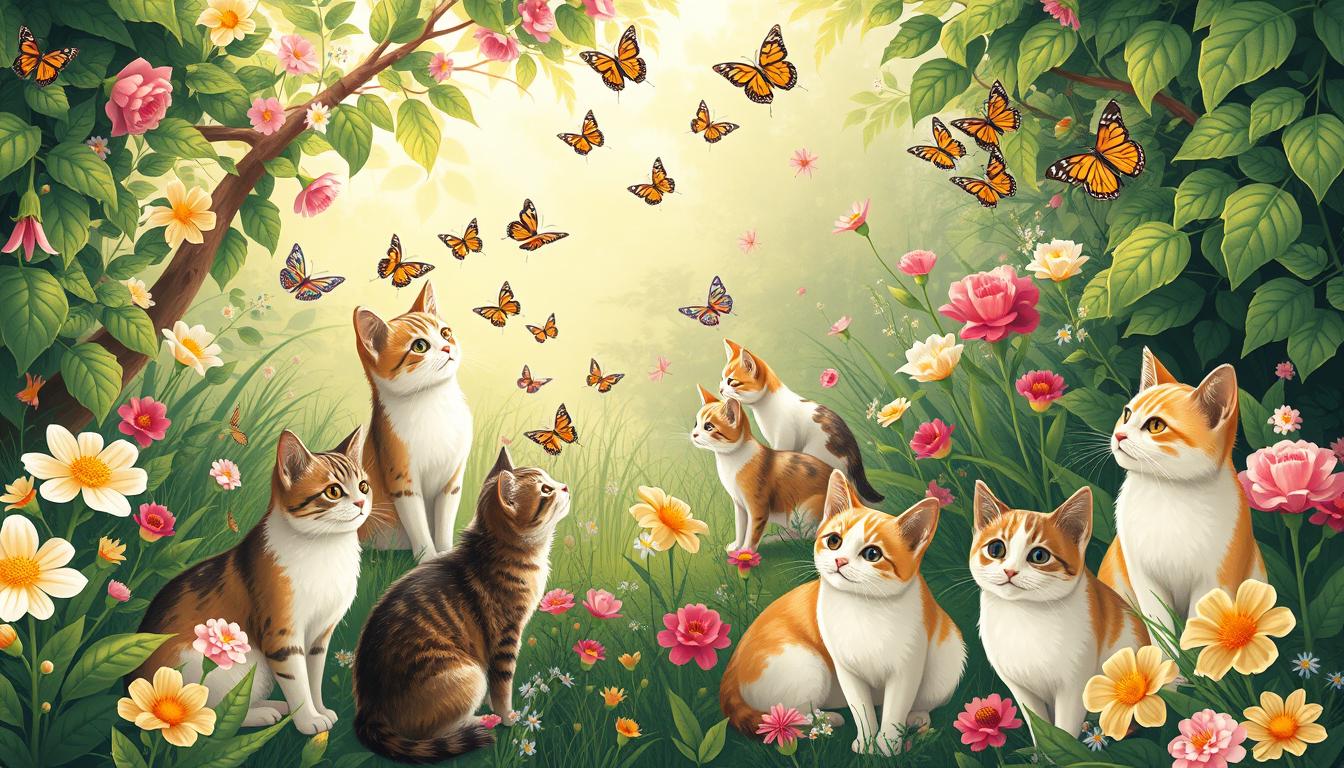As a cat owner, knowing about cat fertility and pregnancy is key. Cats can get pregnant anytime, and they can start breeding as early as 4 months old. But usually, they are ready around 6 months.
This early readiness makes us wonder if cats can get pregnant anytime. It also shows how important cat fertility is in stopping unwanted litters.
Female cats can heat up every 2-3 weeks, all year round. This makes cat fertility a big worry for pet owners. A cat’s pregnancy lasts about 9 weeks, with an average of 63-65 days.
This short pregnancy and frequent breeding mean we must think about the impact. It’s vital to understand feline pregnancy and take steps to stop unwanted breeding.
With a short gestation period and frequent breeding, it’s crucial to consider the implications. We must think about cat fertility and how to manage it. This is important for responsible cat ownership and preventing too many pets.
Key Takeaways
- Cats can reach reproductive maturity as early as 4 months old.
- Female cats can go into heat every 2-3 weeks, year-round.
- The average length of a cat’s pregnancy is about 9 weeks.
- Cats can have between 1 and 10 kittens in a litter, with an average of 3-6 kittens.
- Understanding cat fertility and feline pregnancy is crucial for responsible pet ownership.
- Spaying is generally recommended to prevent unwanted breeding and pet overpopulation.
Understanding the Feline Reproductive Cycle
The cat reproductive cycle starts as early as six months old. It’s key to know this cycle for your cat’s health and behavior.
Cats go through several stages in the feline estrus cycle. These stages show when they are fertile and ready to mate. The stages are proestrus, estrus, diestrus, and anestrus.
The Stages of Cat Fertility
Proestrus is the first stage, where the female shows a bit of interest in males. Then comes estrus, when she is ready to mate. If she doesn’t get pregnant, she goes into diestrus. This leads to anestrus, a time of rest from breeding.
How Often Cats Go Into Heat
Cats can go into heat every 2-3 weeks during the breeding season. This season is from January to late fall in the Northern Hemisphere. The feline estrus cycle is affected by daylight and temperature, letting cats breed many times a year.
Age of Sexual Maturity in Cats
Cats become sexually mature around six months old. Some may grow up faster. At this age, their cat mating behavior shows they are ready to breed.
| Aspect | Details |
|---|---|
| Age of Sexual Maturity | Approximately 6 months |
| Heat Cycle Length | 1 to 21 days (average 7 days) |
| Frequency of Heat | Every 2-3 weeks during breeding season |
| Breeding Season | January to late fall |
| Gestation Period | 64 to 71 days (average 65 days) |
Can Cats Get Pregnant Anytime? The Truth About Feline Fertility
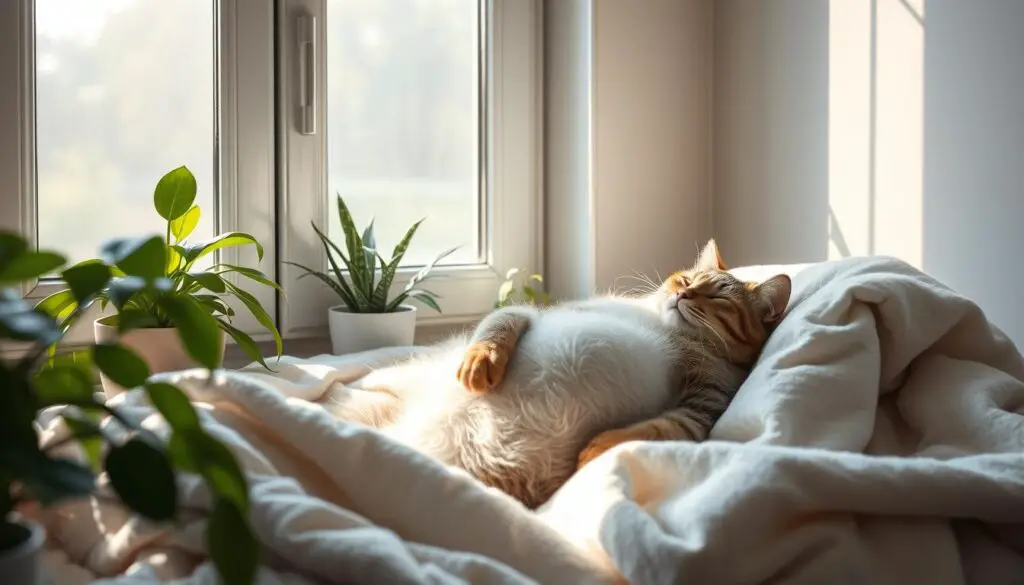
Cats are special because they are induced ovulators. This means they release eggs after mating. This is key to their cat fertility. So, feline pregnancy can happen almost any time they are in heat, letting them have kittens many times a year.
Heat cycles in cats happen often, mainly when days are longer. A female cat can go into heat several times a year. This makes them very fertile.
Cats don’t have a set time for making babies like humans do. They have seasonal polyestrus, with many cycles in their breeding season. This helps kittens be born when it’s best for them to survive. Unlike humans, cats can stay fertile for a long time.
| Aspect | Details |
|---|---|
| Sexual Maturity | Cats reach sexual maturity around 4 months of age. |
| Estrus Cycle Duration | Lasts about 14 days per cycle. |
| Pregnancy Length | Approximately 63 days. |
| Breeding Season | Peaks in March, April, and May in the Northern Hemisphere. |
The Impact of Seasons on Cat Breeding
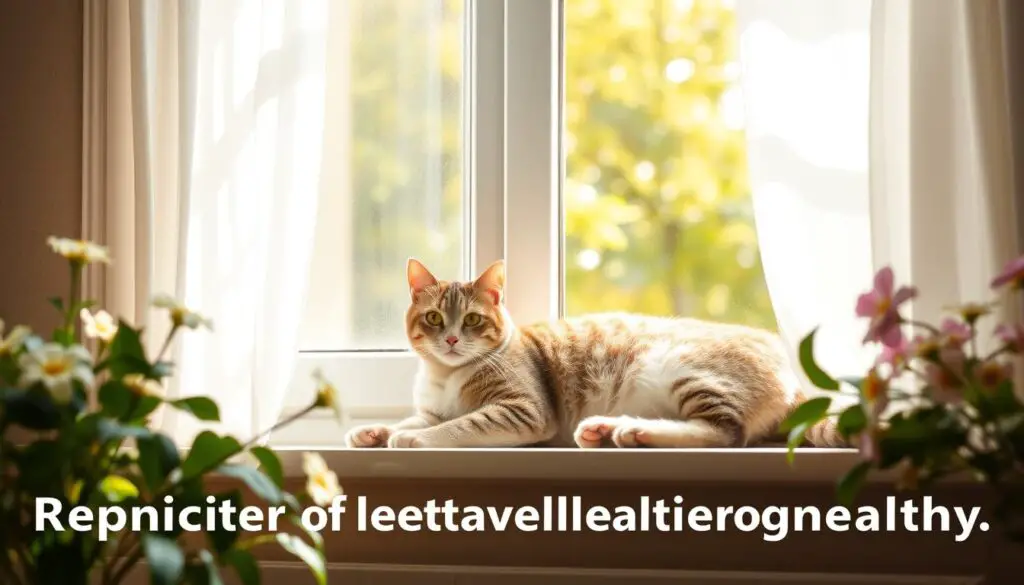
Seasons greatly affect the cat breeding season and reproductive health in cats. Knowing these patterns helps cat owners manage their pets’ breeding behaviors well.
Peak Breeding Months
Most cats start their breeding season in the spring, from February to April. This time has longer daylight hours. These conditions naturally boost fertility in cats.
Light Cycle Effects on Fertility
Daylight hours change cats’ hormonal cycles. Longer daylight in spring and summer makes cats more likely to go into heat. This increases the cat breeding season.
Indoor vs Outdoor Cat Breeding Patterns
Outdoor cats follow natural light cycles, leading to regular breeding patterns. Indoor cats, with artificial lighting, may have different or ongoing heat cycles. This affects their reproductive health in cats.
| Factor | Outdoor Cats | Indoor Cats |
|---|---|---|
| Breeding Season | Seasonal, mainly spring to fall | Year-round, influenced by artificial light |
| Heat Frequency | Every 2-3 weeks during breeding season | Potentially continuous or irregular |
| Reproductive Health | Aligned with natural cycles | May experience hormonal imbalances |
Signs Your Cat Is Ready to Breed
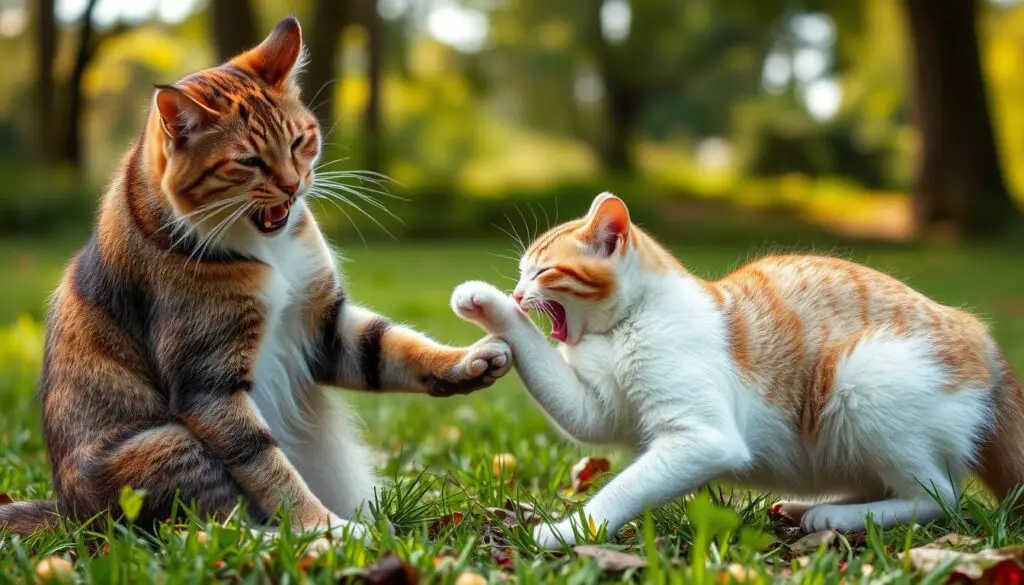
Knowing when your cat is ready to breed means watching for certain behaviors. These signs are part of the feline estrus cycle. Being aware helps manage your pet’s reproductive health well.
- Loud Vocalizations: Cats in heat often meow and yowl a lot to find a mate.
- Increased Affection: Your cat might want more attention, rub against furniture, or cuddle more.
- Rolling on the Floor: A female cat ready to mate may roll on her side or back.
- Elevated Hindquarters: If a cat raises her hind end, she’s ready to breed.
Understanding cat mating behavior helps owners make smart choices. It’s about breeding or getting vet advice. Watching for these signs keeps your cat healthy and prevents unwanted pregnancies.
Health Factors Affecting Cat Fertility
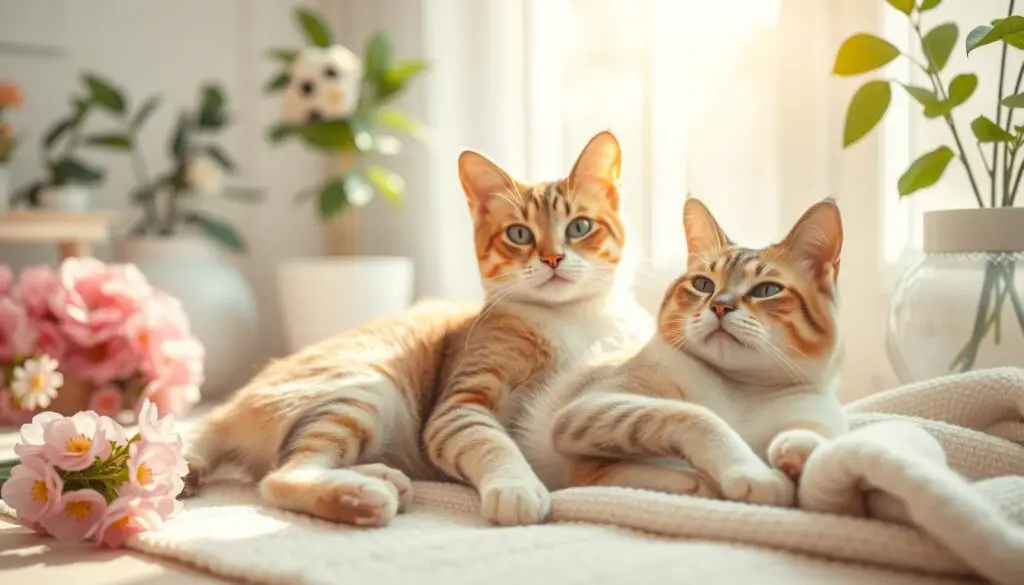
Keeping cats healthy for breeding is key. Physical issues can impact their ability to have kittens. Owners must pay close attention to their pets’ health.
Physical Conditions Impacting Reproduction
Problems like hormonal imbalances and infections can hurt a cat’s fertility. Regular vet visits are crucial. They help spot and fix these issues early on.
Nutritional Requirements for Breeding Cats
Good food is vital for breeding cats. They need more calories, about 1.5 times their usual amount. This supports pregnancy and keeps them healthy. A balanced diet with the right vitamins and minerals is essential for both mom and kittens.
Age-Related Fertility Issues
Age matters a lot for cat fertility. Kittens can breed at about four months, but older cats may not be as fertile. Keeping an eye on their age helps ensure they stay healthy and fertile.
| Health Factor | Impact on Fertility | Recommended Action |
|---|---|---|
| Hormonal Imbalances | Can prevent conception | Seek veterinary treatment |
| Nutrition | Affects overall health and fertility | Provide a balanced, increased diet |
| Age | Older cats may have reduced fertility | Monitor breeding age and health |
Understanding Your Cat’s Heat Cycle
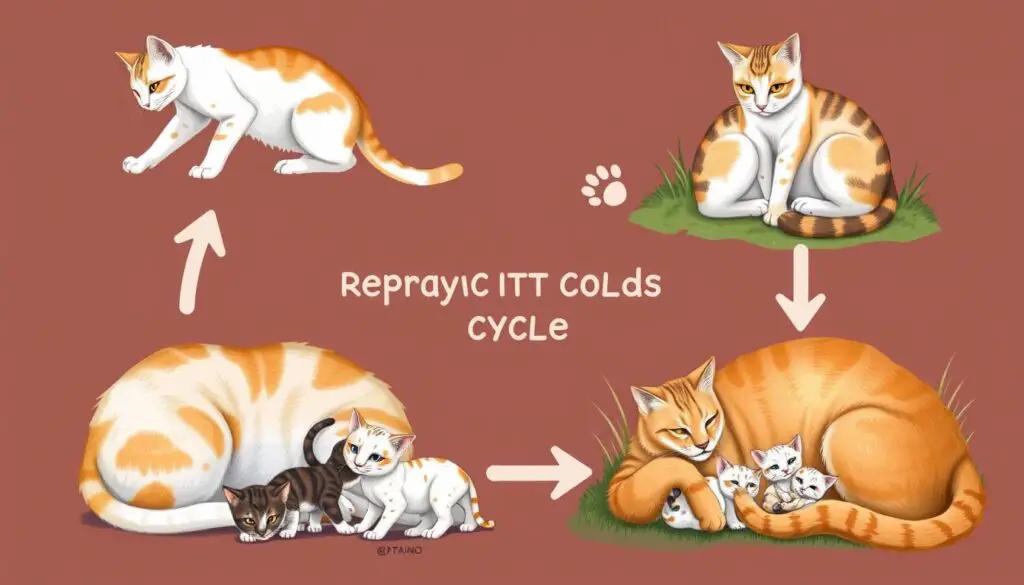
The cat reproductive cycle is a fascinating process that shows a female cat is ready to mate. Knowing about the feline estrus cycle helps you take care of your cat’s health and behavior.
A cat’s heat cycle usually lasts about three weeks. But the active estrus phase can be from one day to a week. Hormonal changes cause various signs in behavior and body.
- Proestrus: Lasts 1-2 days, marked by increased affection and rubbing against objects.
- Estrus: Lasts 1-7 days, when the cat is most fertile and may vocalize loudly.
- Diestrus: If pregnant, this phase supports gestation; if not, the cycle returns to interestrus.
Cats can go into heat every 2-3 weeks from February to October. This is more common in warmer climates or when kept indoors. Signs include restlessness, loud vocalization, and possible vaginal discharge. Spaying early, usually at four months, can prevent unwanted pregnancies and reduce these cycles.
| Phase | Duration | Signs |
|---|---|---|
| Proestrus | 1-2 days | Increased affection, rubbing against objects |
| Estrus | 1-7 days | Loud vocalization, mating behaviors |
| Diestrus | If pregnant | Support of gestation |
Preventing Unwanted Pregnancies in Cats
Keeping reproductive health in cats in check is key to avoiding unwanted pregnancies. Spaying is the top choice, cutting down pregnancy risks a lot. It removes the uterus and ovaries, so your cat can’t get pregnant.
Spaying Options and Timing
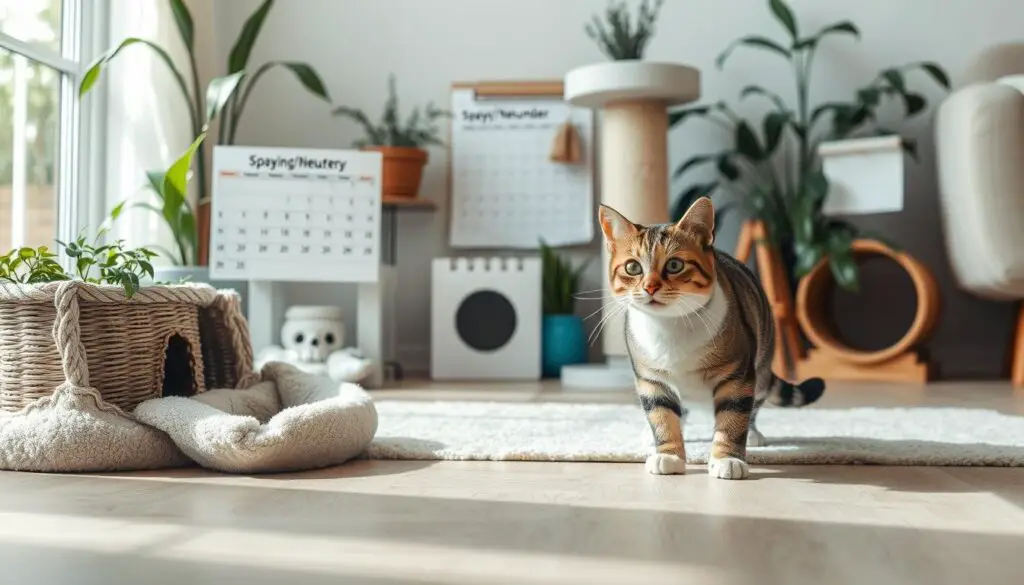
Spaying can start as early as eight weeks old. But, the best time might depend on what your vet says. Early spaying stops feline pregnancy and also lowers cancer risks.
Managing Indoor/Outdoor Access
It’s important to control where your cat goes. Keeping them inside during their heat cycle stops them from mating. For outdoor cats, having them supervised or in safe spots helps keep them away from other cats.
| Method | Benefits | Considerations |
|---|---|---|
| Spaying Before 4 Months | Prevents early feline pregnancy, reduces health risks | Requires veterinary procedure |
| Indoor Management | Limits exposure to males, reduces stress | Needs secure environment |
| Secure Outdoor Enclosures | Allows outdoor access safely, prevents mating | May require investment in enclosure |
Talking to a vet is a good idea to figure out the best spaying time. They can also help with keeping your cat safe from unwanted pregnancies. This way, you help your cat’s health and reduce stray cat numbers.
The Role of Environment in Cat Reproduction
A cat’s environment is key to its reproductive health. Things like temperature and stress levels can really affect how fertile a cat is. They also influence when the cat breeding season happens.
Temperature Effects on Breeding
Stable temperatures are crucial for a cat’s fertility. Too much heat or cold can mess up their reproductive cycle. This makes it tough for them to get pregnant. Keeping the climate comfortable helps cats stay healthy during breeding time.
Stress Impact on Fertility
High stress can hurt a cat’s fertility. Places with lots of disturbances or too many cats can lower their breeding chances. It’s important to give cats a calm and safe place to breed.
| Environmental Factor | Impact on Cat Fertility |
|---|---|
| Temperature | Extreme temperatures can disrupt reproductive cycles and reduce conception rates. |
| Stress Levels | High stress can lower fertility and lead to irregular heat cycles. |
| Living Space | Overcrowded or unstable environments can increase stress and decrease breeding success. |
| Light Exposure | Consistent light cycles support regular breeding seasons. |
Responsible Cat Breeding Practices
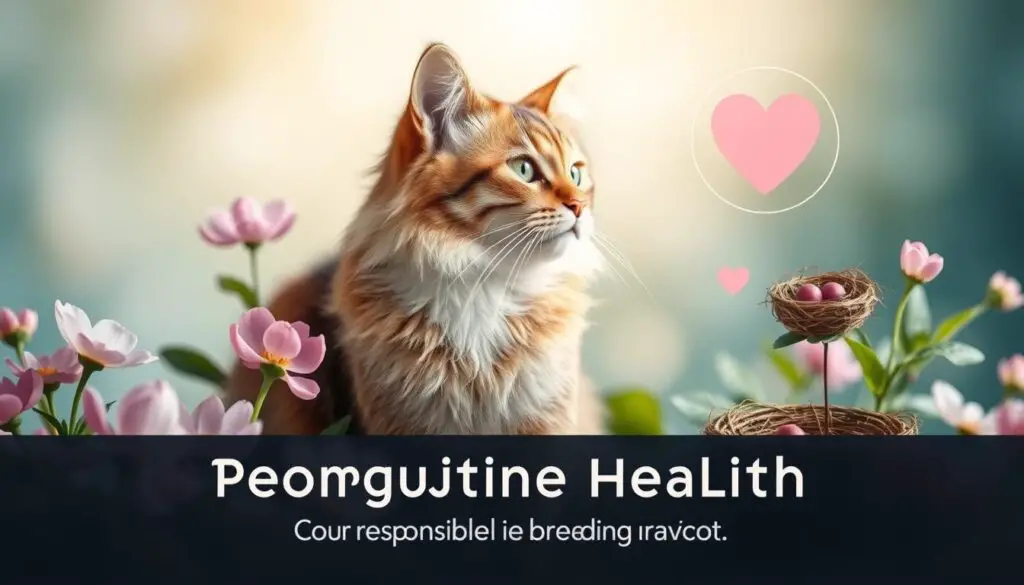
Responsible cat breeding starts with health checks. Breeders must test for genetic issues to protect the cats’ health. This ensures the cats stay healthy for a long time.
It’s important to care for the mother and kittens well. They need a safe place, good food, and vet visits. This keeps them happy and healthy.
- Health screenings and genetic testing
- Proper housing and nutrition
- Social interaction and mental stimulation
- Ethical breeding practices to prevent overpopulation
Ethical breeding is key. Breeders should find good homes for kittens and not add to pet overpopulation. This way, every cat gets a loving home.
It takes a lot of money and time. Costs can be high, from $500 for tests to thousands for emergencies. Breeders need to be ready for these expenses.
Conclusion: Making Informed Decisions About Cat Reproduction
Cats can get pregnant many times a year. It’s key for owners to know about feline pregnancy and cat fertility. Knowing the signs of heat cycles and the gestation period helps manage your cat’s health.
Being a responsible pet owner means making smart choices about breeding. Talking to vets can give you advice to keep your cat healthy and prevent unwanted pregnancies. Spaying is a good way to control the cat population and keep your cat well.
Environment and health are big in cat fertility. Knowing about these helps create a safe space for your cat. Making smart choices about breeding keeps your cat healthy and supports good pet ownership.
Learn as much as you can and take action to manage your cat’s health. This helps your cat and the community by promoting responsible breeding and reducing overpopulation issues.
FAQ
Can cats get pregnant at any time of the year?
At what age do cats reach sexual maturity?
How often do cats go into heat?
What are the stages of the feline reproductive cycle?
How do seasons affect cat breeding patterns?
What signs indicate that a cat is in heat and ready to breed?
What health factors can impact a cat’s fertility?
What are the phases of a cat’s heat cycle?
How can unwanted pregnancies in cats be prevented?
How do environmental factors like temperature and stress influence cat reproduction?
What are the best practices for responsible cat breeding?
Why is understanding the feline reproductive cycle important for cat owners?

Hello, this is Frank Swanson, the owner, and operator of Pet Info Hut. I created this website as a way to share my love of pets with the world. I have over 7 years of experience working with animals, and I have a passion for helping people care for their pets. I hope that you find my website useful and informative. Thanks for visiting!

